|
 |  |  |
 |
| |
Ghengis Kahn siege coin Afghanistan 1220-1227 AF#11
Price: $25.00


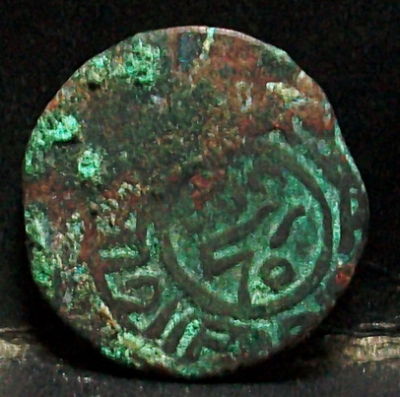
Description:
Genghis Khan and the Great Mongol Empire
Genghis Khan
Afghanistan 1220-1227 (Ghengis Kahn) Jital Kurzuwan siege coin.
Afghanistan1220-1227 (Ghengis Kahn) Kurzuwan siege
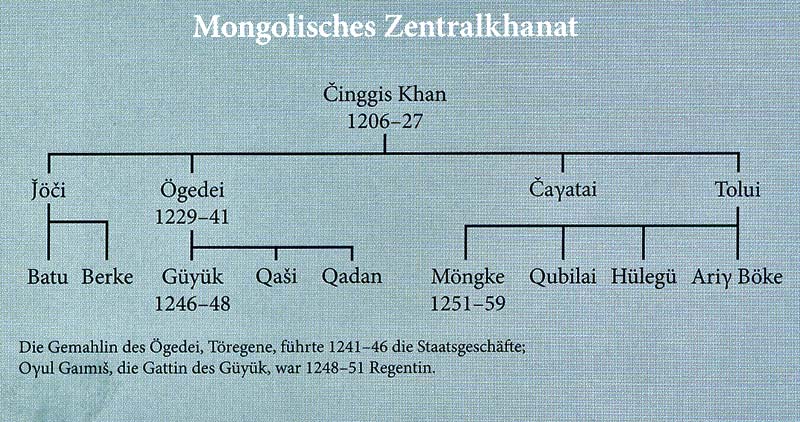
This coin is a copper jital, 12.3 mm in size, that until recently was thought to have been an anonymous issue of Chingiz Khan (AH 603-624/ 1206-1227 AD). It is now regarded as an issue of an unknown Malik (King) of Kurzuwan struck while Kurzuwan was under siege by the Mongols during Chingiz Khan's reign. The mint name Kurzuwan (present-day northern Afghanistan) is at the top of the reverse. The obverse is dated with both the month, Rabi' II, and the year, AH 618, around the margin, with the word Malik (King) or Mulk (Kingdom) in the center. All of these issues are dated AH 618 with either Rabi' II or Jumada I as the month. Rabi' II is the more common of the two
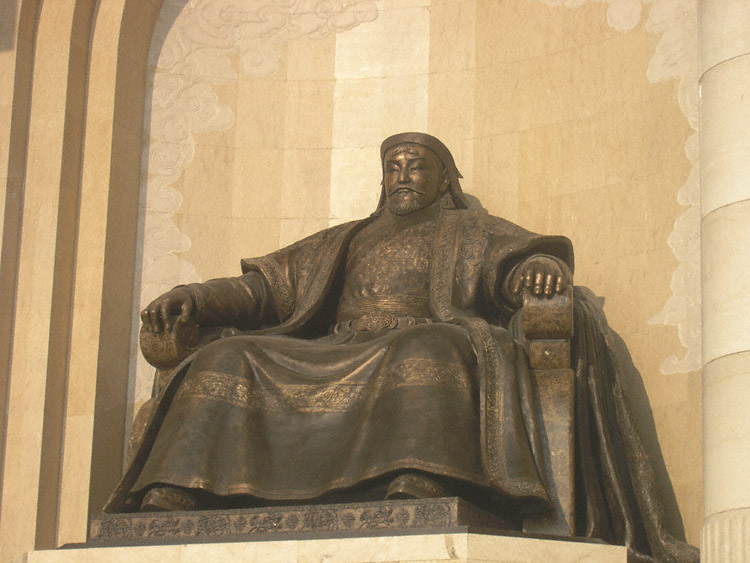
The knights at their tournaments, in their finery, armor and emblems of ancestry, believed they were the foremost warriors in the world, while Mongol warriors thought otherwise. Mongol horses were small, but their riders were lightly clad and they moved with greater speed. These were hardy men who grew up on horses and hunting, making them better warriors than those who grew up in agricultural societies and cities. Their main weapon was the bow and arrow. And the Mongols of the early 1200s were highly disciplined, superbly coordinated and brilliant in tactics.
The Mongols were illiterate, religiously shamanistic and perhaps no more than 700,000 in number. Their language today is described as Altaic, a language unrelated to Chinese, derived from inhabitants in the Altay mountain range in western Mongolia - a language unrelated to Chinese. They were herdsmen on the grassy plains north of the Gobi Desert and south of Siberian forests. Before the year 1200, the Mongols were fragmented, moving about in small bands headed by a chief, or khan, and living in portable felt dwellings, called by the Mongols " ger." The Mongols endured frequent deprivations and sparse areas for grazing their animals. They frequently fought over turf, and during hard times they occasionally raided, interested in goods rather than bloodshed. They did not collect heads or scalps as trophies and did not notch wood to record their kills.
From his late teens to age thirty-eight in 1200, a Mongol named Temujin (Tem?jin) rose as khan over various families. He was a good manager, collecting people of talent. He was vassal to Ong Khan, titular head of a confederacy better organized than other Mongol clans. Temujin joined Ong Khan in a military campaign against Tatars to their east, and following the success of this campaign Ong Khan declared Temujin his adoptive son and heir. Ong Khan's natural son, Senggum (Sengg?m), had been expecting to succeed his father and plotted to assassinate Temujin. Temujin learned of this, and those loyal to Temujin defeated those loyal to Senggum. Temujin was now established as the head of what had been Ong Khan's coalition. And in 1206, at the age of 42, Temujin took the title Universal Ruler, which translates to Genghis Khan, and he addressed his joyous supporters thanking them for their help and their loyalty.
Like peoples elsewhere, Genghis Khan's subjects saw themselves at the center of the universe, the greatest of people and favored by the gods. They justified Genghis Khan's success in warfare by claiming that he was the rightful master not only over the "peoples of the felt tent" but the entire world. Genghis Khan continued organizing. He improved his military organization, which was also to serve as a mobile political bureaucracy, and he broke up what was left of old enemy tribes, leaving as ethnically homogeneous only those tribes that had demonstrated loyalty to him. He created a body of law that he was to work on throughout his life.
The kidnapping of women had caused feuding among the Mongols, and, as a teenager, Temujin had suffered from the kidnapping of his young wife, Borte. After devoting himself to rescuing her, he made it law that there was to be no kidnapping of women. He declared all children legitimate, whomever the mother. He made it law that no woman would be sold into marriage. The stealing of animals had caused dissension among the Mongols, and Genghis Khan made it a capital offense. A lost animal was to be returned to its owner, and taking lost property as one's own was to be considered thievery and a capital offense. Genghis Khan regulated hunting -- a winter activity -- improving the availability of meat for everyone. He introduced record keeping, taking advantage of his move years before to have his native language put into writing. He created official seals. He created a supreme officer of the law, who was to collect and preserve all judicial decisions, to oversee the trials of all those charged with wrongdoing and to have the power to issue death sentences. He created order in his realm that strengthened it and his ability to expand.
Conquests in Northern China

Genghis Khan moved to secure his borders. To his south he made an alliance with the Uighurs, who were closer than the Mongols were to the Silk Road and to wealth. He married his daughter to the Uighur Khan, and the Uighur Khan brought to the wedding party a caravan laden with gold, silver, pearls, brocaded fabrics, silks and satins. The Mongols had only leather, fur and felt -- a humiliation for a master of the entire world.
Genghis Khan needed booty to pay troops securing his northern border and subduing an old enemy there, the Merkits . He acted on his mandate as the rightful ruler of the entire world and attacked the rulers of farmers and herders in northwestern China, the Tangut, who had much in goods like the Uighur Khan. In warriors the Mongols were outnumbered two to one, and they had to learn a new kind of warfare against fortified cities, including cutting supply lines and diverting rivers. Genghis Khan and his army were victorious, and in 1210 Genghis Khan won from the Tangut recognition as overlord.
Also in 1210, the Jin dynastry of Jurchen people, who ruled that part of northern China that included Beijing, sent a delegation to Genghis Khan demanding Mongol submission as vassals. The Jin dynasty controlled the flow of goods along the Silk Road, and defying them meant a lack of access to those goods. Genghis Khan and the Mongols discussed the matter and chose war. Genghis, according to the scholar Jack Weatherford, prayed alone on a mountain, bowing down and stating his case to "his supernatural guardians," describing the grievances, the tortures and killings that generations of his people had suffered at the hands of the Jurchen. And he pleaded that he had not sought war against the Jurchen and had not initiated the quarrel. [note]
Genghis Khan and the Making of the Modern World, by Jack Weatherford, p. 83.
In 1211, Genghis Khan and his army attacked. The Jurchen (Jin) dynasty had a large and effective army but they were hard pressed by both the Mongols and by a border war with the Tangut. They were also under attack by Chinese from south of the Yangzi River, the Southern Song emperor wishing to take advantage of the Jurchen-Mongol conflict to liberate northern China. But the Jurchen drove the Chinese armies into retreat. The Mongols were benefiting from China having failed during the previous century to make itself a strong military power. They benefited too from the Jurchen (Jin) dynastry ruling conquered people. The Mongols used divide and conquer tactics, using benevolence toward those who sided with them and terror and bloodshed against those who did not. They ravaged the countryside, gathering information and booty and driving populations in front of them, clogging the roads and trapping the Jurchen within their cities, where the Jurchen (Jin) dynasty was subject to revolts. The Mongols used conscripted labor in attacking cities and in operating their newly acquired Chinese siege engines.
Against the Jurchen the Mongols had an advantage in diet, which included a lot of meat, milk and yogurt, and they could miss a day or two of eating better than Jurchen soldiers, who ate grains. Genghis Khan and his army overran Beijing and pushed into the heartland of northern China. Military success helped as people acquired the impression that Genghis Khan had the Mandate of Heaven and that fighting against him was fighting heaven itself. The Jurchen emperor recognized Mongol authority and agreed to pay tribute.
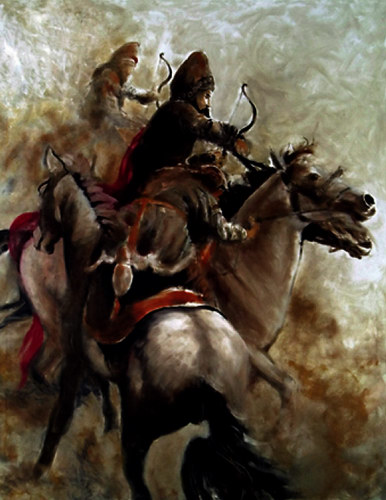
After six years of fighting the Jurchen, Genghis Khan returned to Mongolia, leaving one of his best generals in charge of Mongol positions. Returning with Genghis Khan and his Mongols were engineers who had become a permanent part of their army, and there were captive musicians, translators, doctors and scribes, camels and wagonloads of goods. Among the goods were silk, including silken rope, cushions, blankets, robes, rugs, wall hangings, porcelain, iron kettles, armor, perfumes, jewelry, wine, honey, medicines, bronze, silver and gold, and much else. And goods from China would now come in a steady flow.
The Mongols were happy to be back from China, their homeland higher in elevation, less humid and cooler. As eaters of meat and sparsely populated they felt superior to people in northern China, but they liked what China had to offer, and at home there was change. The continuing flow of goods from China had to be administered and properly distributed, and buildings had to be built to store the goods. Success in war was changing the Mongols - as it had the Romans and the Arabs.
Into Afghanistan and Persia
Genghis Khan wanted trade and goods, including new weapons, for his nation. A Mongol caravan of several hundred merchants approached a recently formed Khwarezmid Empire in Persia and Central Asia. The sultan there claimed that spies were in the caravan. Genghis Khan sent envoys. The sultan received them by having the chief of the envoys killed and the beards of the others burned, and he sent the other envoys back to Genghis Khan.
Genghis Khan retaliated, sending his army westward. In the coldest of months the Mongols rode across the desert to Transoxiana with no baggage, slowing to the pace of merchants before appearing as warriors in front of the smaller towns of the sultan's empire. His strategy was to frighten the townspeople into surrendering without battle, benefiting his own troops, whose lives he valued. Those frightened into surrender were spared violence, those who resisted were slaughtered as an example for others, which sent many fleeing and spreading panic from the first towns to the city of Bukhara. People in Bukhara opened the city's gates to the Mongols and surrendered. Genghis Khan told them that they, the common people, were not at fault, that high-ranking people among them had committed great sins that inspired God to send him and his army as punishment. The sultan's capital city, Samarkand, surrendered. His army surrendered, and he fled.
Genghis Khan and his army pushed more deeply into the sultan's empire -- into Afghanistan and then Persia. It is said that the caliph in Baghdad was hostile toward the sultan and supported Genghis Khan, sending him a regiment of European crusaders who had been his prisoners. Genghis Khan, having no need for infantry, freed them, with those making it to Europe spreading the first news of the Mongol conquests. Genghis Khan had 100,000 to 125,000 horsemen, with Uighur and Turkic allies, engineers and Chinese doctors -- a total of from 150,000 to 200,000 men. To show their submission, some offered food to the Mongols, and Genghis Khan's force guaranteed them protection. Some cities surrendered without fighting. In cities the Mongols were forced to conquer, after killing its fighting men, Genghis Khan divided the survivors by profession. He drafted the few who were literate and anyone who could speak various languages. Those who had been the city's most rich and powerful he wasted no time in killing, remembering that the rulers he had left behind after conquering the Tangut and Jurchen had betrayed him soon after his army had withdrawn.
The Mongols did not torture, mutilate or maim, but their enemies did. Captured Mongols were dragged through streets and killed for sport and to entertain city residents. Nor did the Mongols partake in the gruesome displays of stetching, emasculation, belly cutting and hacking to pieces that European rulers often resorted to elicit fear and discourage potential enemies -- as was soon to happen to William Wallace on orders from England's King Edward I. The Mongols merely slaughtered, and preferring to do so from a distance.
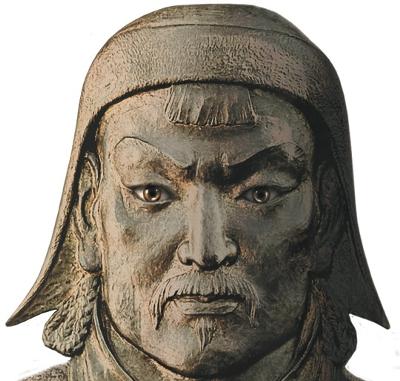
1220 and 1221 AD weren't very good years in Central Asia.
When Genghis Khan destroyed Samarkand in 1220, the Khorezm Shah fled west, leaving the cities of Afghanistan to organise their own defence.
This coin was struck during the siege of the city of Kurzuwan, by its hastily elected and short lived 'king' (malik).
(Was it a morale boost or an overinflated ego that minted coins to celebrate his title?)
It seems the Muslims of Khorezm had sent a caravan to the Mongols which was well received.
When the Mongols returned the favor it entered Khorezm in the territory of the governor Inalchuk, a relative of the Sultan, who on a pretext had the merchants robbed and executed.
Genghis sent an embassy to demand redress; the envoys were sent home by the Sultan with insults.
The Sultan thought himself secure within his Empire; it was a fatal error.
When confronted by the Mongols the word was basically “Submit or Die!”
But if you'd already made waves it was a little too late.
When the city finally fell (it possibly only lasted two months or even weeks as coins dating to only two months exist) all the inhabitants were massacred around July of that year (leaving only an empty ruin inhabited by wild dogs, according to subsequent travellers).
This bracelet seems to have both of the two coins minted over the last two months of the city, the siege itself may have only lasted two weeks spanning the junction of those two months.
At least then, these two represent June and July 1221 AD, but I don't know which is which.
The coins have survived buried since then and have a light green patina contrasting nicely with the bright new silver.
When this silver eventually oxidizes just give it a gentle polish with a dry Silver Polishing Cloth.
Don't dip or polish the coins, you'll only rub off the patina, revealing fresh shiny copper underneath.
Even when two coins have been struck from the same die, they vary, although these are pretty close in shape.
This is because to produce a coin in ancient times a slug of red hot metal was struck between two engraved bronze dies.
The hot slug then squished out of shape between them, taking the detail onto its surface, deforming horizontally in the process.
Perfectly duplicated, matching designs and shapes indicate casting from a single original, which is not the case with these coins.We've deliberately left the backs open on these earrings to allow you to view the reverse of the coin for verification.The silver fob/bar and 3 generous rings would comfortably fit a wrist measuring from 178 mm to maybe 209 mm at a pinch.
According to legend, Genghis Khan lies buried somewhere beneath the dusty steppe of Northeastern Mongolia, entombed in a spot so secretive that anyone who made the mistake of encountering his funeral procession was executed on the spot.
Once he was below ground, his men brought in horses to trample evidence of his grave, and just to be absolutely sure he would never be found, they diverted a river to flow over their leader's final resting place.
What Khan and his followers couldn't have envisioned was that nearly 800 years after his death, scientists at UCSan Diego's Center for Interdisciplinary Science in Art, Architecture and Archaeology (CISA3) would be able to locate his tomb using advanced visualization technologies whose origins can be traced back to the time of the Mongolian emperor himself.
"As outrageous as it might sound, we're looking for the tomb of Genghis Khan," says Dr. Albert Yu-Min Lin, an affiliated researcher for CISA3. "Genghis Khan was one of the most exceptional men in all of history, but his life is too often dismissed as being that of a bloodthirsty warrior. Few people in the West know about his legacy — that he united warring tribes of Mongolia and merged them into one, that he introduced the East to the West making explorations like those of Marco Polo possible, that he tried to create a central world currency, that he introduced a written language to the Mongol people and created bridges that we still use today within the realm of international relations.
"But as great a man he was, there are few clues and no factual evidence about Genghis Khan's burial, which is why we need to start using technology to solve this mystery."
Lin and several colleagues — including Professor Maurizio Seracini, the director of CISA3 and the man behind the search for Leonardo da Vinci's lost "Battle of Anghiari" painting — are hoping to use advanced visualization and analytical technologies available at the California Institute for Telecommunications and Information Technology (Calit2) to pinpoint Khan's tomb and conduct a non-invasive archaeological analysis of the area where he is believed to be buried. Lin plans to work with Seracini to establish a position at UCSD that will allow him to spearhead the three-year Valley of the Khans project, which will require $700,000 in funding for eight researchers (including all expedition costs).

Khan's grave is presumably in a region bordered by Mongolia's Onon River and the Khan khentii mountains near his birthplace in Khentii Aimag, and some experts believe his sons and other family members were later buried beside him. The researchers, however, have little additional information to go on. Directly following Khan's death in 1227, the area around his tomb was deemed forbidden by the emperor's guards, and later in the 20th century, by strict Russian occupation, which prohibited Mongolians from even talking about Genghis Khan because they felt it might lead to nationalist uprising. Only since the 1990s have researchers been allowed in the area, and several other research teams have tried unsuccessfully to locate the tomb.
Lin hopesof success are based on his access to unparalleled technology at Calit2 and CISA3 to pinpoint the area where Khan might have been laid to rest, find the tomb itself and then develop a virtual recreation of it using various methods of spectral and digital imaging.
Explains Lin : "If you have a large burial, that's going to have an impact on the landscape. To find Khan's tomb, we'll be using remote sensing techniques and satellite imagery to take digital pictures of the ground in the surrounding region, which we'll be able to display on Calit2's 287-million pixel HIPerSpace display wall. But we also want to make this an interactive research project and get the public involved. One of our ideas is to utilize something like the International Space Station's 'EarthCam' program at UCSD, which recruits middle school students to control a satellite camera and take pictures of the earth. We'd have them do the same thing, only they'd be taking pictures of the area where Genghis' tomb might be located."
Lin says another approach would be to combine social networking with visualization techniques to replicate something like the online "Find Steve Fossett" project, which enlisted members of the general public to flag anomalous satellite images in the hopes that they could locate the missing adventurer.
"Once we've narrowed down this region in Mongolia to a certain area," Lin continues, "we'll use techniques such as ground penetrating radar, electromagnetic induction and magnetometry to produce non-destructive, non-invasive surveys. We'll then work with people in UCSD's electrical engineering department to develop visual algorithms that will allow us to create a high-resolution, 3-D representation of the site."
Notably, these computer-based technologies are modern evolutions of moveable type and the printing press — innovations that historian Jack Weatherford argues were spread by way of the Mongols as they conquered parts of Europe (Chinese printing technologies predated Gutenberg's printing press by several hundred years). Lin speculates that remnants of those international conquests might even turn up in Khan's tomb, but, he adds, "The process of doing an archaeological dig is up to the Mongolian government."

Lin says he's hoping to collaborate with the Mongolian government and national universities, through the help of Amaraa and Bayarsihan Baljinnayam — siblings from what he endearingly calls his "Mongolian family." They will assist with language interpretation and expedition coordination, and most importantly, local media and political support — connections that will prove very useful as Lin navigates through the often complex arena of international relations.
Noting that his project team also includes San Diego State University Professor of Chemistry and Biochemistry William G. Tong, UCSD Field Systems Engineer Nathan Ricklin, UCSD Computer Vision Engineer Shay Har-Noy and Independent Engineering Geologist Charles Ince, Lin says he sees parallels between the collaborative work he's doing with CISA3 and Genghis' own push to adapt to new technologies.
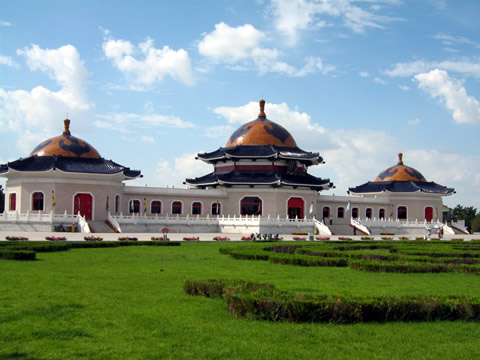
"He took the best resources of entire world — whether weaponry or medicine -- and adopted those technologies into his own methodology. We're trying to implement that same adaptation to many disciplines into our own work. We're taking the great work that's already been done in archaeology and further developing it by using technologies from other disciplines -- computer vision, social networking, electrical engineering — while at the same time never forgetting fundamentals of historical search.
Despite the technologies and expertise available to him, Lin says he is well aware of the great challenges the project poses. "One consistent fact is that there is no fact," he admits. "It's a story of secrets upon secrets and myths upon myths.
"If I could meet Genghis Khan today, I would ask how he would have wanted to be remembered in history," Lin muses. "The fact that he died in his bed surrounded by people who loved him and never had a single General turn his back on him, the fact that the loyalty of his people is so sound it can be heard across the world — these are the marks of one of the most impressive military heroes of all time. This is an example of a leader who was ruthless, strict, disciplined, and in a lot of ways, extremely honorable. If he was able to rewrite his own history, I wonder how he'd want it heard."
| Return Policy: | Items must be returned within 7 days .
Refund will be given as Money back.
Refund policy details:
null |
| Shipping: | Destination: Thailand |
|---|
|
| STANDARD | Standard | $4.50 | | | Destination: Worldwide |
|---|
|
| STANDARD | Standard | $4.50 | | |
|
| Insurance: | Not Offered (Domestic)
|
|
Buy this item Now:
Price: $25.00

|

|
|  |
 |  |  |
|
|



